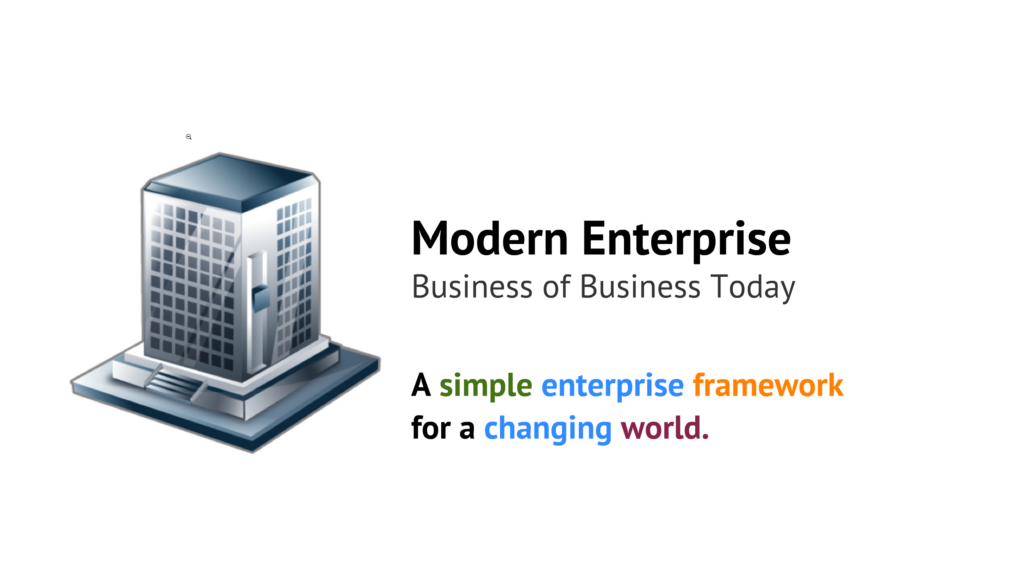The Modern Enterprise canvas draws inspiration from its predecessors, the Lean Startup and Business Model canvases. It outlines a clear organization for enterprises ranging from startups to established businesses to follow and anatomizes the modern enterprise into its discrete components.
The Modern Enterprise canvas is three-dimensional, dividing a company into the four Contexts of People, Processes, Information, and Systems. One can then classify each Context into Internal and External dimensions, which one can then further divide into five Areas of Responsibility.
 The contexts represent the most overarching aspect of the Modern Enterprise, providing the primary organization for the book. One can map every type of person with whom a firm involves itself, internal and external, across a business social graph. Businesses utilize processes as their executable software, the iterable instructions that direct the business’s people.
The contexts represent the most overarching aspect of the Modern Enterprise, providing the primary organization for the book. One can map every type of person with whom a firm involves itself, internal and external, across a business social graph. Businesses utilize processes as their executable software, the iterable instructions that direct the business’s people.
Information serves as the DNA of business in that it encodes vital instructions as to how the business’s people should execute their processes. Systems are the underlying engine that augment the power and efficiency of all of the above.
Along the second axis of the Modern Enterprise canvas, one can draw a broad distinction between internal and external dimensions. External Contexts and Areas of Responsibility represent the company’s interactions with the outside world. Customers, sales meetings, contact lists and CRMs are examples of external operations and resources. On the other hand, internal Contexts and Responsibilities are the behind-the-scenes operations and resources necessary for the company to function and succeed. Some examples include employees, R&D projects, billable hours, and management software.
One can demarcate five Areas of Responsibilities. Areas of Responsibility supersede the notion of departments—a small startup requires more flexibility given its limited personnel and employees often work across multiple areas.

- Products and Services deals with the creation of revenue-generating offerings. A modern enterprise blurs the boundary between products and services—a company can sell a software product as a monthly service and can produce a service for a select few clients.
- Research and Development explores products and services that the enterprise can deploy in the future to remain competitive and profitable.
- Sales and Marketing teams market the company’s offerings, then sells to prospective leads and clients.
- Finance and Accounting tracks the money flow in the company from external revenue into internal costs.
- Operations and Infrastructure serves as the glue that unifies other responsibility areas and is the oil that facilitates execution.
- Leadership and Management guides all other areas of responsibility.
The Modern Enterprise canvas yields a comprehensible and comprehensive roadmap for all SaaS businesses, from entrepreneurs seeking to create a startup to businessmen refactoring their companies towards efficiency.
Justin Yum is an apprentice for Anant Corporation (www.anant.us). For more tips, and to be notified on the release of Rahul Singh’s upcoming book “The Modern Enterprise,” subscribe to the Anant Corporation newsletter by clicking here: http://eepurl.com/npJmj
Like us on Facebook
Follow us on Twitter


